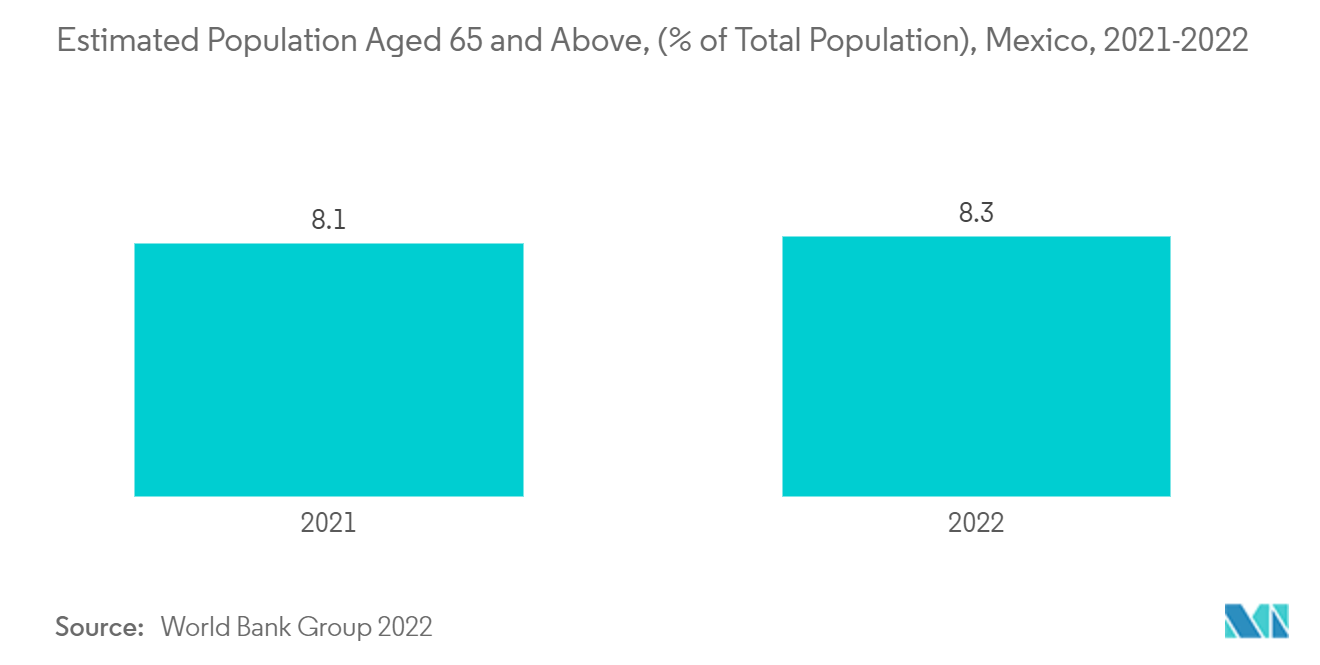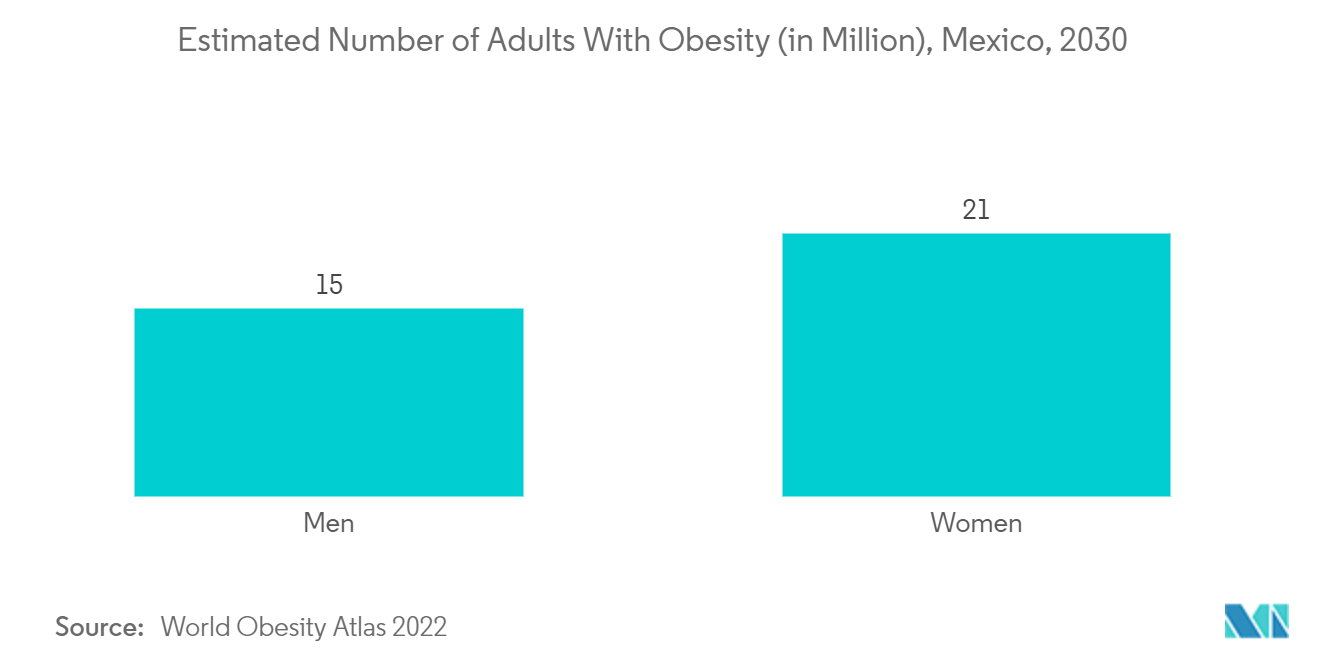Market Trends of Mexico Patient Monitoring Industry
Hemodynamic Monitoring Devices Segment is Expected to Grow Fastest Over the Forecast Period
- The primary purpose of hemodynamic monitoring in critically ill patients is to accurately assess the circulatory system and its response to tissue oxygen needs. The major factors driving the growth of this segment include the rising burden of chronic diseases such as diabetes and cardiovascular diseases due to lifestyle changes and the growing demand for home-based and non-invasive monitoring systems.
- For instance, as per the data from the American Heart Association 2022, in Mexico, 56.1% of adults have high levels of low-density lipoprotein- cholesterol (LDL-C), or bad cholesterol, which is thought to be the primary risk factor for cardiovascular disease. With financing from Novartis, the American Heart Association began a new implementation science program in Mexico aimed at enhancing care for patients with atherosclerotic cardiovascular disease (ASCVD), often known as atherosclerosis. Since hemodynamic monitoring assesses the cardiovascular system and its response to tissue oxygen demands, this initiative is expected to benefit cardiology care in the country in terms of prevention as well as treatment, which will ultimately boost the demand for hemodynamic monitoring in the country.
- Additionally, Mexico has several cardiology-related associations that work for the betterment of cardiac care. For instance, the Mexican Society of Cardiology is dedicated to creating awareness about the risk factors associated with cardiac diseases and the treatments for heart failure.
- With such awareness, the general population can understand the importance of cardiac stents, which is ultimately increasing the demand for stents in Mexico. Furthermore, in Mexico, the current burden of heart disease continues to be very high, affecting approximately 26% of the population, according to data from the Federation Heart World, representing 4% of total health spending.
- Therefore, due to the rise in cardiovascular complications and the increase in key player presence, the studied segment is anticipated to witness significant growth over the forecast period.

Neurology Segment is Likely to Hold a Significant Market Growth Over the Forecast period
- The neurology segment is expected to expand at a rapid pace due to the rise in neurological disorders, the increasing aging population, and the rise in healthcare expenditure in Mexico. For instance, according to the published in January 2021 in Pubmed, in Mexico, traumatic brain injuries were ranked as the third leading cause of fatalities coupled with the rise in accidents. Similarly, the increasing number of cases of stroke in Mexico is also considered one of the growth-promoting factors for the market.
- For instance, according to the study published in June 2022 in PubMed, a total of 1361 adults with acute stroke were identified (mean age 69.2 years; 52% women) with a transient ischemic attack (5.5%), acute ischemic stroke (68.6%), intracerebral hemorrhage (23.1%), cerebral venous thrombosis (0.2%), and undetermined stroke (2.6%). The study also stated that the main risk factors were hypertension (80.7%) and diabetes mellitus (47.6%). Neurology monitoring devices are generally recommended for continuous monitoring of the risk of stroke. Therefore, such a high prevalence of stroke in the country may propel the demand for neurology monitoring devices.
- Furthermore, improvements in the management of epilepsy medication in Mexico are expected to drive the demand for neurology monitoring in the country. For instance, as per the study published in July 2021 in PubMed, healthcare management was making efforts to improve hospital protocols to reduce the non-attendance of epilepsy patients. Hence, such an initiative may enhance patient adherence to follow-up, ultimately increasing the quality of care in the epilepsy clinic.
- As patient adherence increases, the demand for patient monitoring devices for neurology increases, thereby contributing to the market growth over the forecast period. Also, The high incidence of obesity is linked to a significant financial, societal, and medical burden. Obesity-related metabolic dysfunction, dyslipidemia, and inflammation are factors in several illnesses and consequences on the neurological system. For instance, as per the World Obesity Atlas 2023, 47% of adults are likely to be obese in Mexico by 2035.
- Therefore, due to the rise in neurological diseases and the increase in government initiatives to boost neurology patient monitoring, the studied segment is anticipated to witness significant growth over the forecast period.


